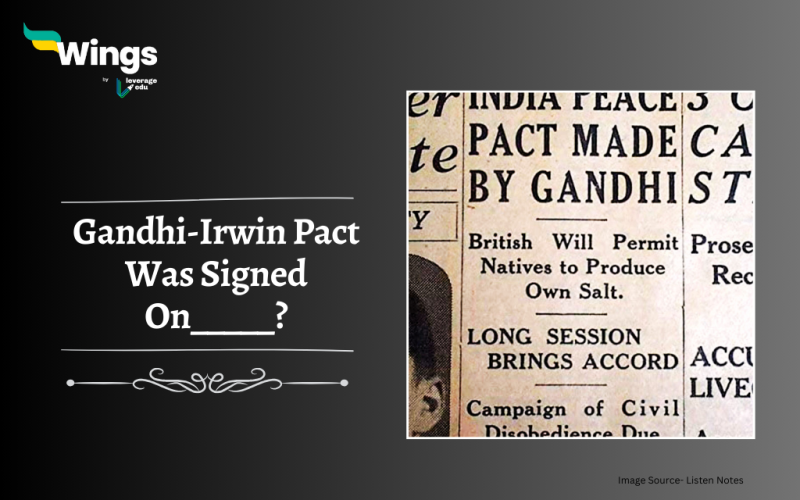The Gandhi-Irwin Pact was signed on 5th March 1931. It was a political agreement between the leader of the Indian Nationalist Movement Mahatma Gandhi and the then Viceroy of India Lord Irwin. The agreement was signed during the Second Round Table Conference which was held in London. The pact was also called the Delhi Pact and had a far-reaching implication for the future administrative development of British-ruled India and the journey towards independence. Let us know more about the reasons and dates the Gandhi-Irwin Pact was signed on.
Table of Contents [show]
Date and Circumstances
- Signed on: March 5, 1931
- Location: New Delhi, India
- Context: At the time, Mahatma Gandhi was leading the Civil Disobedience Movement against British colonial rule in India. The movement aimed to achieve swaraj or self-rule through non-violent means such as protests, strikes, and boycotts.
In February 1931, Viceroy Lord Irwin invited Gandhi to meet in an attempt to find a common ground for negotiations. After intense discussions and deliberations, both parties reached an agreement that came to be known as the Gandhi-Irwin Pact.
Also Read – Why Was the Gandhi-Irwin Pact Signed?
Points of the Gandhi-Irwin Pact
- One of the main provisions of the pact was the release of all political prisoners who were detained during the civil disobedience movement.
- The pact also allowed for Indian representation at the upcoming Second Round Table Conference in London, where discussions on India’s future governance were to take place.
- In return, Gandhi agreed to call off the civil disobedience movement and curb protests and agitations temporarily.
The signing of the Gandhi-Irwin Pact had both immediate and long-term effects on the Indian independence movement. While it temporarily diffused tensions between the British government and Indian nationalists, it also set the stage for further negotiations and discussions on the future of India.
Relevant Blogs
This blog was all about the Gandhi-Irwin Pact was signed on. If you want to read more articles like this, you can get Short notes on the Modern History of India here. Also, you can visit our general knowledge page on Indian History!
 One app for all your study abroad needs
One app for all your study abroad needs















 45,000+ students trusted us with their dreams. Take the first step today!
45,000+ students trusted us with their dreams. Take the first step today!
